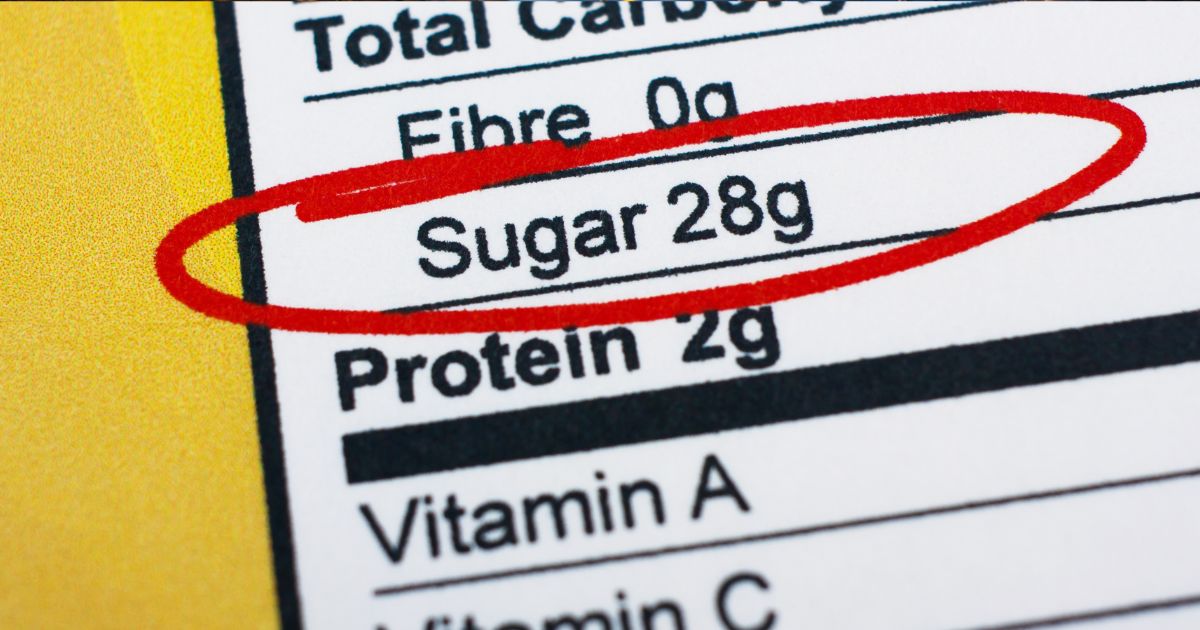When examining food labels, focus on serving sizes, hidden sugars, fat content, artificial additives, and sodium levels. Be cautious of added sugars like high-fructose corn syrup, and opt for whole foods. Choose unsaturated fats over saturated ones and avoid trans fats. Watch out for artificial additives like colors and flavors. Monitor sodium levels and aim for lower sodium options. Consider organic foods for fewer pesticides. Scrutinize marketing claims for accuracy. Remember, understanding food labels is key to making informed choices for your health and well-being.
- Key Takeaways
- Understanding Serving Sizes
- Identifying Hidden Sugars
- Decoding Fat Content
- Recognizing Artificial Additives
- Analyzing Sodium Levels
- Evaluating Fiber Content
- Uncovering Food Allergens
- Interpreting Ingredient Lists
- Comparing Organic Vs. Non-Organic
- Avoiding Misleading Marketing Claims
- Conclusion
Key Takeaways
- Pay attention to serving sizes for accurate nutritional intake.
- Beware of hidden sugars under various names in food labels.
- Choose foods with heart-healthy unsaturated fats over saturated and trans fats.
- Be cautious of artificial additives like colors, flavors, and sweeteners.
- Monitor sodium levels to make healthier choices without compromising taste.
Understanding Serving Sizes
Understanding serving sizes is important for making informed choices about your food consumption. By paying attention to serving sizes listed on food labels, you can better manage your caloric intake and ensure you’re meeting your nutritional needs. Serving sizes are standardized to allow for easy comparison between similar products. They provide information on the amount of food typically consumed at one time and help you gauge how much you’re actually eating compared to the recommended portion.
It is essential to note that serving sizes can vary greatly between different products, so it’s critical to check the serving size on each package. This practice can prevent overeating and help you maintain a healthy weight. Additionally, understanding serving sizes can assist you in tracking your nutrient intake, such as monitoring your sodium, sugar, and fat consumption. By being mindful of serving sizes, you can make more conscious decisions about your food choices and promote a balanced diet.
Identifying Hidden Sugars
To effectively identify hidden sugars in your diet, carefully examine food labels for ingredients like high-fructose corn syrup, maltose, or dextrose. These sugars may not always be obvious since they can be listed under various names. It’s important to be aware of terms like evaporated cane juice, agave nectar, or fruit juice concentrates, as these are all forms of added sugars. Keep an eye out for ingredients ending in ‘-ose,’ as they’re likely types of sugar.
Additionally, be cautious of products labeled as ‘low-fat’ or ‘fat-free,’ as they may contain higher sugar content to compensate for flavor. Remember that even seemingly healthy foods like yogurt, granola bars, or salad dressings can hide significant amounts of sugar. Opt for whole foods whenever possible and choose products with little to no added sugars.
Decoding Fat Content
Deciphering the fat content listed on food labels is essential for making informed and health-conscious dietary choices. When reading food labels, focus on the type of fat rather than just the total fat content. Unsaturated fats, such as those found in avocados and nuts, are heart-healthy options that can help lower cholesterol levels. Saturated fats, commonly found in animal products and processed foods, should be limited as they can raise cholesterol levels and increase the risk of heart disease. Trans fats, often listed as partially hydrogenated oils, are the most harmful and should be avoided altogether.
To make better choices, look for products with lower saturated and trans fat content. Opt for lean meats, poultry without skin, and low-fat dairy products. Additionally, incorporating sources of unsaturated fats, like olive oil and fatty fish, into your diet can have numerous health benefits. Remember, moderation is key when it comes to fat consumption. By understanding and decoding the fat content on food labels, you can take control of your health and make more informed decisions about the foods you eat.
Recognizing Artificial Additives
When evaluating food labels, be cautious of the presence of artificial additives, as they can have implications for your health and well-being. Artificial additives are substances that are added to food during processing to improve its flavor, appearance, texture, or shelf life. While some additives are harmless, others may have negative effects on your health. Common artificial additives to watch out for include artificial colors, flavors, sweeteners, and preservatives.
Artificial colors are often used to enhance the visual appeal of food products but have been linked to hyperactivity in children and other health issues. Artificial flavors can mimic natural flavors but may contain chemicals that could be harmful in large quantities. Artificial sweeteners, such as aspartame and saccharin, are used as sugar substitutes but have been associated with various health concerns. Additionally, preservatives like sulfites and nitrites are used to prolong the shelf life of foods but may have adverse effects on some individuals.
To make informed choices about the foods you consume, read food labels carefully, opt for products with minimal artificial additives, and choose whole, unprocessed foods whenever possible.
Analyzing Sodium Levels
Analyze the sodium levels listed on food labels to make informed decisions about your salt intake and dietary choices. Sodium is an essential mineral needed by the body; however, excessive consumption can lead to health issues like high blood pressure.
Here are some key points to ponder when evaluating sodium levels on food labels:
- Daily Limit: The American Heart Association recommends consuming no more than 2,300 milligrams of sodium per day, with an ideal limit of 1,500 milligrams for most adults.
- % Daily Value: Check the percentage of the daily value (%DV) for sodium on the label. A general guide is that 5% DV or less is considered low, while 20% DV or more is high.
- Comparative Analysis: When comparing similar products, opt for the one with lower sodium content. This can help you make healthier choices without compromising on taste.
Evaluating Fiber Content
To assess the fiber content of a food product effectively, look for the total grams of dietary fiber listed on the nutrition label. Fiber is an essential nutrient that aids in digestion, helps you feel full, and supports overall gut health. The recommended daily intake of fiber is around 25 grams for women and 38 grams for men. When evaluating fiber content, focus on whole foods that are naturally rich in fiber, such as fruits, vegetables, whole grains, nuts, and seeds.
To further illustrate the importance of fiber content in your diet, consider the following table:
| Food Item | Fiber Content (per serving) |
|---|---|
| Apple | 4 grams |
| Black beans | 15 grams |
| Quinoa | 5 grams |
| Almonds | 3 grams |
Uncovering Food Allergens
Explore the presence of potential food allergens by carefully scrutinizing the ingredient list on food labels. Food allergies can trigger severe reactions, making it important to identify and avoid allergens in your diet.
Here are three key tips to help you uncover food allergens effectively:
- Look for Common Allergens: Be aware of common allergens such as peanuts, tree nuts, dairy, eggs, soy, wheat, fish, and shellfish. These ingredients are known to cause allergic reactions in many individuals.
- Check for Hidden Sources: Some allergens may be present in the form of additives, flavorings, or cross-contaminants. Always check for hidden sources of allergens that may not be obvious.
- Read Labels Thoroughly: Carefully read the entire ingredient list, even if you have consumed the product before. Ingredients can change, and manufacturers may introduce new allergens into the formulation.
Interpreting Ingredient Lists
When decoding food labels, pay close attention to the ingredient lists to make informed choices about what you consume. Ingredient lists are an essential part of food labeling, providing insight into what goes into the products you buy. Here are some key points to take into account when interpreting ingredient lists:
| Pay Attention To | What To Do |
|---|---|
| Whole Ingredients | Look for foods with whole ingredients listed first, like fruits, vegetables, whole grains, and lean proteins. These are indicative of a healthier choice. |
| Hidden Sugars | Watch out for hidden sugars by checking for ingredients ending in ‘-ose’ or words like syrup, nectar, or sweetener. Opt for products with lower sugar content. |
| Artificial Additives | Avoid products with artificial additives such as artificial colors (like Blue 1 or Red 40) and artificial flavors. Choose products with natural ingredients instead. |
| Trans Fats | Keep an eye out for trans fats in the ingredient list, as they can increase the risk of heart disease. Select products with zero trans fats. |
| Sodium Levels | Monitor the sodium content in foods by checking for ingredients like salt, sodium nitrate, or monosodium glutamate (MSG). Choose lower sodium options to maintain a healthy diet. |
Comparing Organic Vs. Non-Organic
Comparing organic and non-organic food options provides insight into factors that may influence your food choices for a healthier diet. When deciding between the two, consider the following:
- Pesticide Use: Organic foods are grown without synthetic pesticides, which may reduce your exposure to potentially harmful chemicals.
- Nutrient Content: Some studies suggest that organic produce may have higher levels of certain nutrients, although more research is needed to confirm this.
- Environmental Impact: Organic farming practices tend to be more environmentally friendly, promoting soil health and biodiversity.
While organic foods may offer benefits regarding reduced pesticide exposure and potential nutrient content, it’s important to keep in mind that both organic and non-organic options can be part of a healthy diet. Ultimately, the most important factor is consuming a variety of whole foods, whether they’re organic or not, to make sure you’re getting essential nutrients for overall health and well-being.
Avoiding Misleading Marketing Claims
To navigate the complexities of food labels effectively, be vigilant in scrutinizing marketing claims that may be misleading or confusing. Manufacturers often use terms like ‘natural,’ ‘wholesome,’ or ‘low-fat‘ to entice consumers into thinking a product is healthier than it really is. However, these terms aren’t regulated by the FDA and can be used loosely without meeting specific criteria.
To avoid falling into this marketing trap, focus on the nutrition facts panel and ingredient list. These sections provide concrete information about the product’s contents, allowing you to make informed decisions. Watch out for claims like ‘no added sugars,’ which can still contain high levels of natural sugars, or ‘made with whole grains,’ which may only contain a small amount of whole grains.
Conclusion
Next time you pick up a packaged food item, remember to explore beyond the flashy marketing claims and colorful packaging. Delve into the food label to truly understand what you’re putting into your body.
Imagine peeling back the layers of a label like unwrapping a gift, revealing the truth about what’s inside. By being informed and aware of what to look for and what to avoid, you can make healthier choices for yourself and your family.




